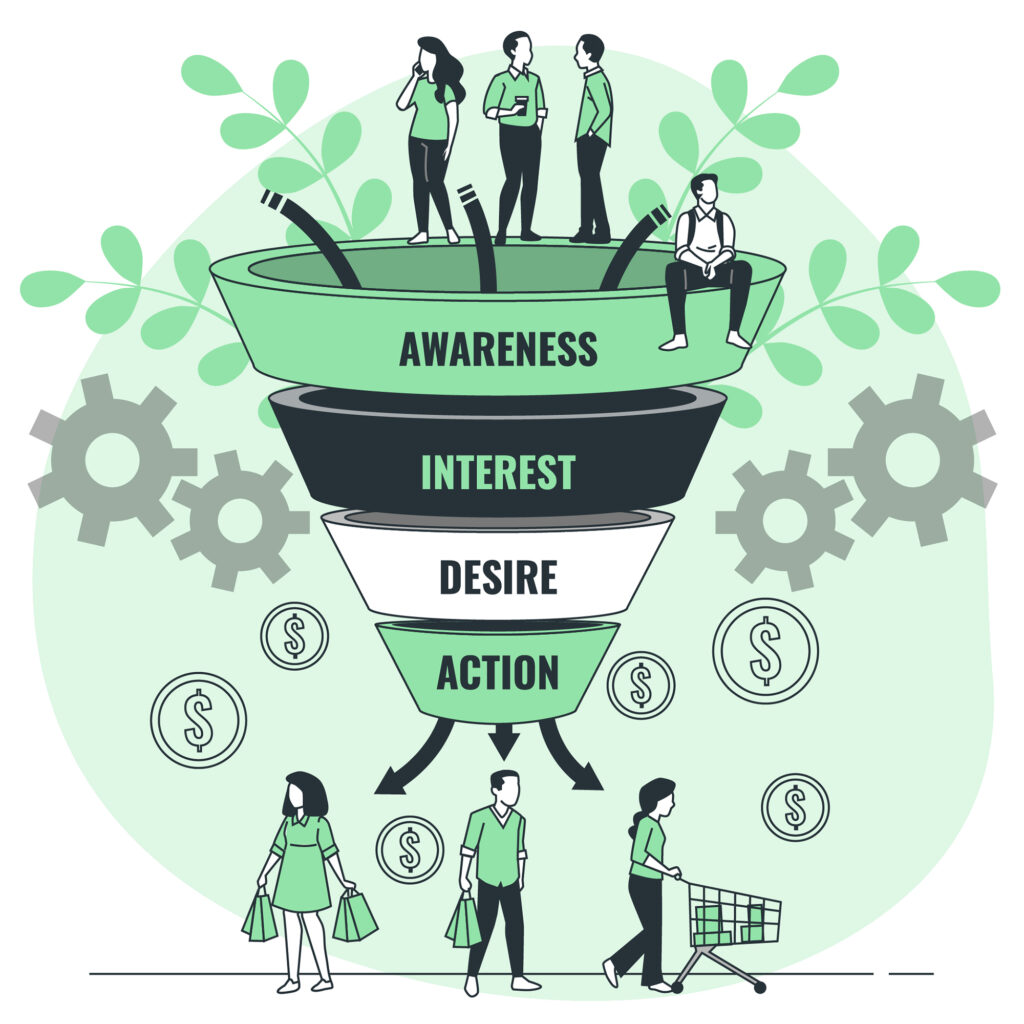Content marketing is a powerful tool for guiding potential customers through the buyer’s journey. By delivering the right content at the right stage, businesses can nurture leads, build trust, and ultimately drive conversions. In this blog post, we’ll explore how different types of content—blog posts, case studies, webinars, and whitepapers—align with various stages of the sales funnel and provide practical tips for crafting an effective content strategy.
Top of the Funnel (Awareness Stage)
At this stage, prospects are just becoming aware of their problems and looking for information. Your goal is to educate and attract them with valuable, engaging content.
Best Content Types:
Blog Posts: Publish informative, SEO-optimized articles that answer common questions and address industry pain points.
Infographics: Visual content simplifies complex ideas and makes information shareable.
Social Media Content: Share industry insights, quick tips, and thought leadership pieces to engage a broad audience.
Videos: Short explainer videos and educational content can grab attention quickly.
Practical Tips:
- Focus on topics that resonate with your target audience’s interests.
- Use keyword research to create content that aligns with search intent.
- Promote content through social media, email newsletters, and paid ads.
Middle of the Funnel (Consideration Stage)
At this stage, prospects are evaluating solutions and need more in-depth content that positions your brand as a trusted resource.
Best Content Types:
Case Studies: Showcase real-life success stories that demonstrate how your product or service solves specific problems.
Webinars: Host live or recorded sessions on industry trends, challenges, and solutions.
Ebooks & Whitepapers: Offer downloadable content with deeper insights in exchange for contact information.
Comparison Guides: Help prospects evaluate different solutions, including your own offerings.
Practical Tips:
- Capture leads with gated content like ebooks or whitepapers.
- Personalize email marketing campaigns based on user interactions.
- Leverage retargeting ads to stay top-of-mind with interested prospects.
Bottom of the Funnel (Decision Stage)
Here, prospects are ready to make a decision. Your content should reinforce trust and provide the final push toward conversion.
Best Content Types:
Product Demos & Free Trials: Allow prospects to experience your solution firsthand.
Customer Testimonials & Reviews: Showcase authentic feedback from satisfied customers.
Pricing Pages & ROI Calculators: Provide clear pricing information and demonstrate the value of your product.
Sales Enablement Content: Equip sales teams with brochures, presentations, and FAQs to address objections.
Practical Tips:
- Offer personalized follow-ups to answer any last-minute questions.
- Highlight unique selling points and competitive advantages.
- Provide limited-time offers or incentives to encourage immediate action.
Retention & Advocacy (Post-Purchase Stage)
Once a customer converts, your content strategy should focus on retaining them and turning them into advocates.
Best Content Types:
Onboarding Emails & Guides: Help customers get the most out of your product.
Exclusive Content: Offer insider tips, advanced tutorials, or premium resources.
User-Generated Content & Community Engagement: Encourage customers to share their experiences.
Loyalty Programs & Referral Incentives: Reward customers for advocacy and referrals.
Practical Tips:
- Provide exceptional customer support with helpful content.
- Engage customers through surveys and feedback loops.
- Create a community where customers can interact and share insights.
Final Thoughts
A well-structured content marketing strategy nurtures leads at every stage of the funnel. By aligning content with buyer intent, businesses can build trust, drive engagement, and ultimately boost conversions. Ready to refine your content strategy? Start by auditing your existing content and identifying gaps in your funnel today!
